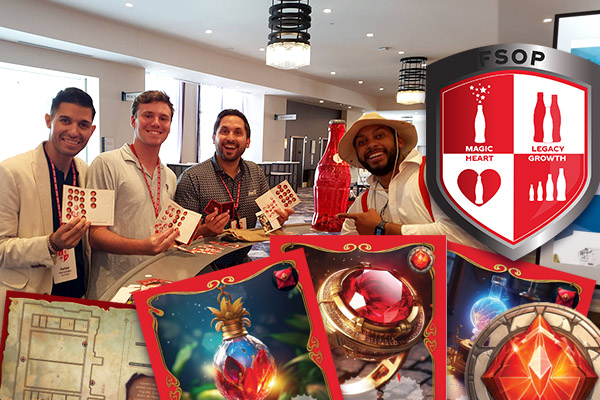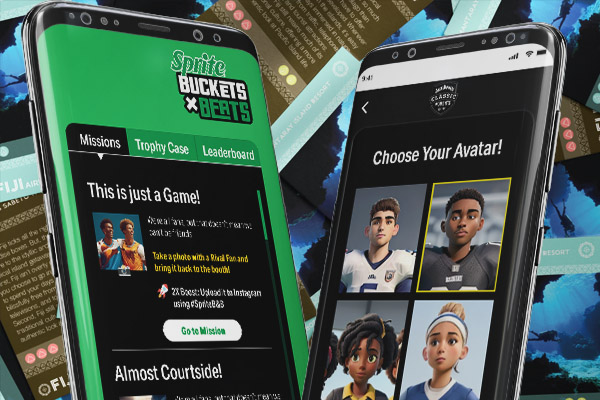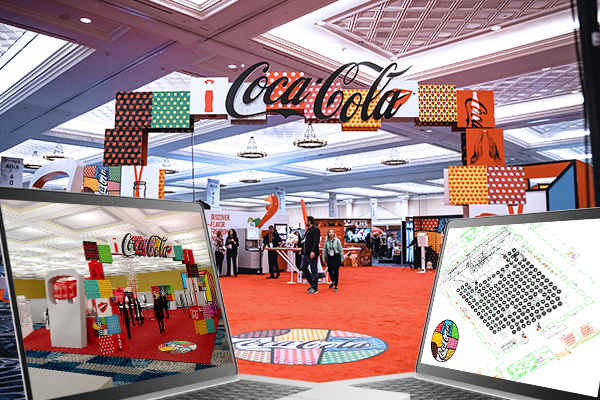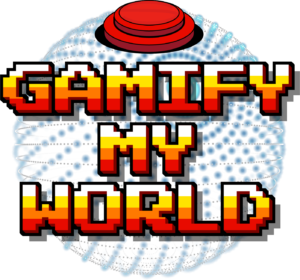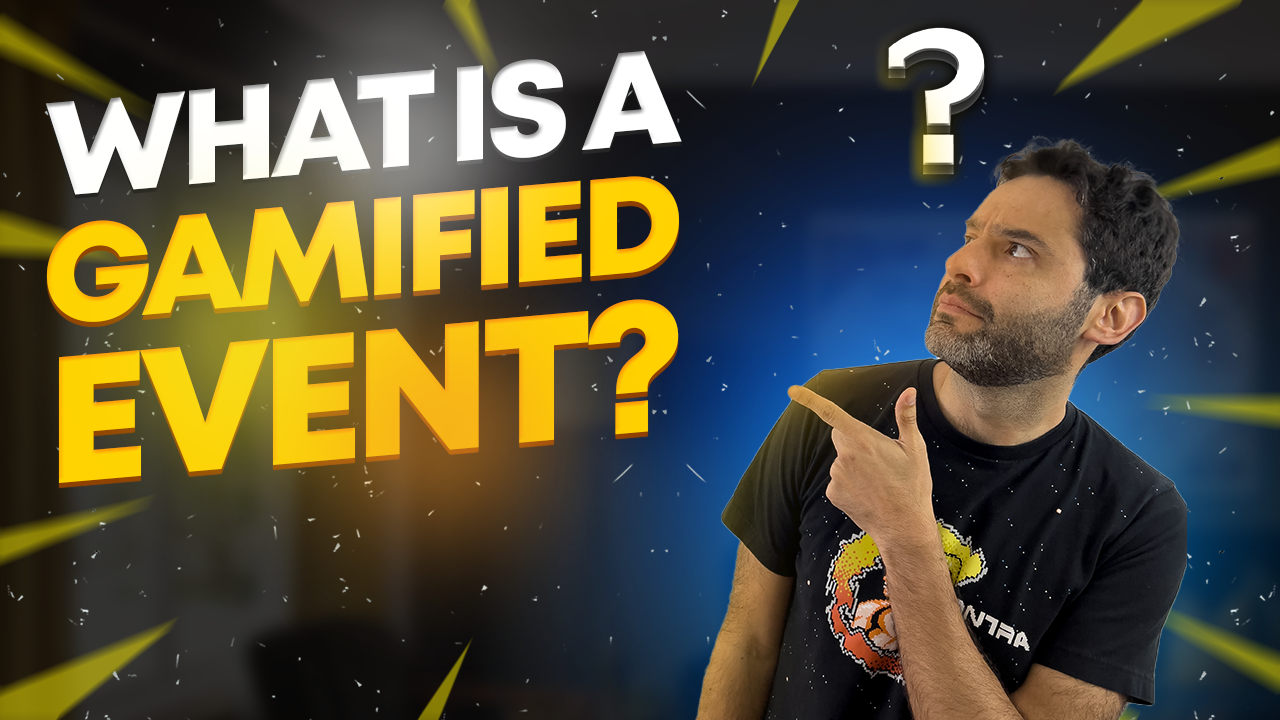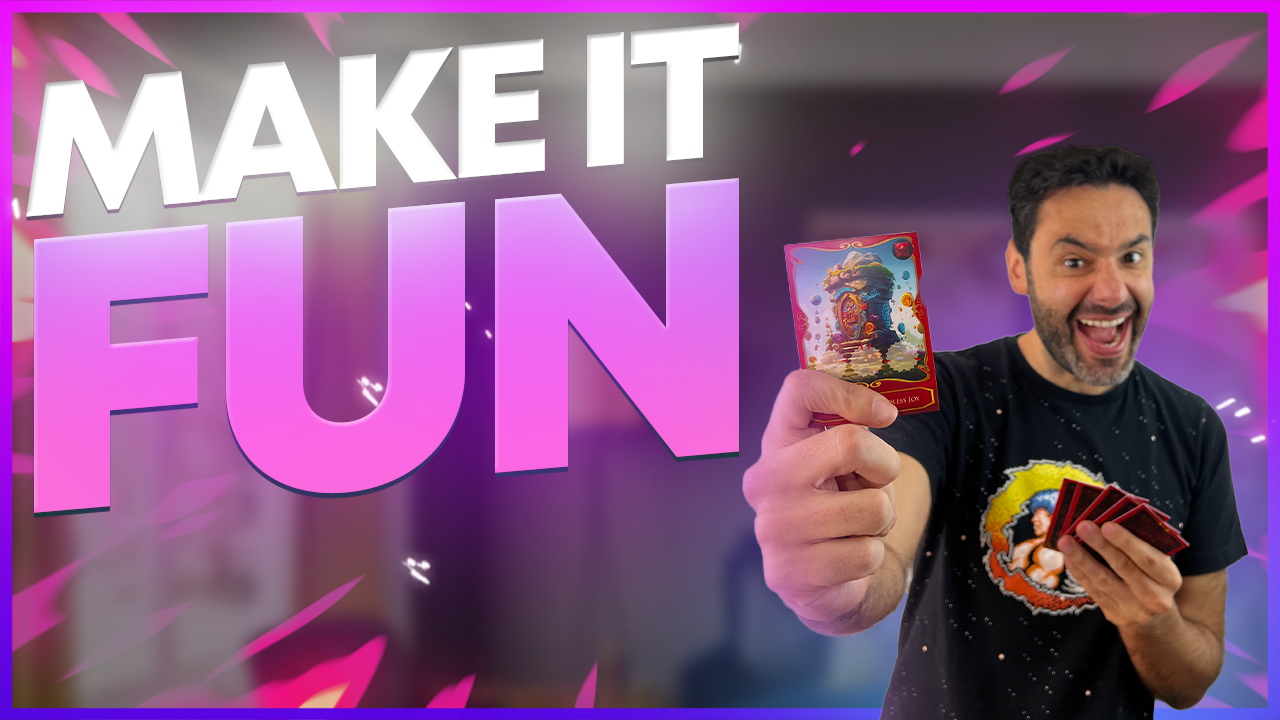Making events more fun and impactul through gamification
At Azul Marketing, we provide a broad range of gamification services to take your event experiences to the next level. Our systematic approach ensures more meaningful engagement.
At Azul Marketing, we provide a broad range of gamification services to create epic, memorable event experiences.
We support your agency in the quest to deliver your clients the best possible gamified activation.
How we do it?
Full Event Gamification
Imgine being able to bring a full team of experts to help you create a fully gamified experience from scratch. Well, that's exactly what we do here.
We become part of your team from the beggining and help you design, present, refine, and execute the full activation. You have the control, but we do all the work and bring our expertise to your team.
What's included?
- Collaborating from day one of planning
- Conducting audience research
- Advising on engagement strategy
- Designing custom games and challenges
- Developing digital tools and platforms
- Crafting narratives, characters, and worlds
- Creating all branded assets and graphic design
- Managing gamification execution and logistics
Ready to go Gamification
The fastest way to take your activations from good to great. We have a set of proven tools that are ready to be customized for your brand and specific needs.
These tools allow us to quickly identify the opportunities in an activation and provide effective tools to our partners so they can enhance their events in record time.
What kind of tools?
- Event Engagement Custom Apps
- Card Games (competition, collectible, trading, etc)
- Custom activities for events and activations
- Narrative components
Creative Support
After several years of experience and hundreds of successful events, we feel confident that our team can help yours bring any idea to life.
We understand a lot of times there's so much going on and we all have wished we had a reliable and experienced partner who we could trust can help us get it right. We had done it. Lots of times. And we can do it for you too.
What's included?
- Art direction
- Graphic design
- Illustration
- 3D modeling (Design, rendering, professional visualization)
- Copywriting
- Video production
- Website design
- Audio production
Do you want to explore how we can help you get to the next level?
How we do it?
Our proprietary BEM framework boosts engagement through:
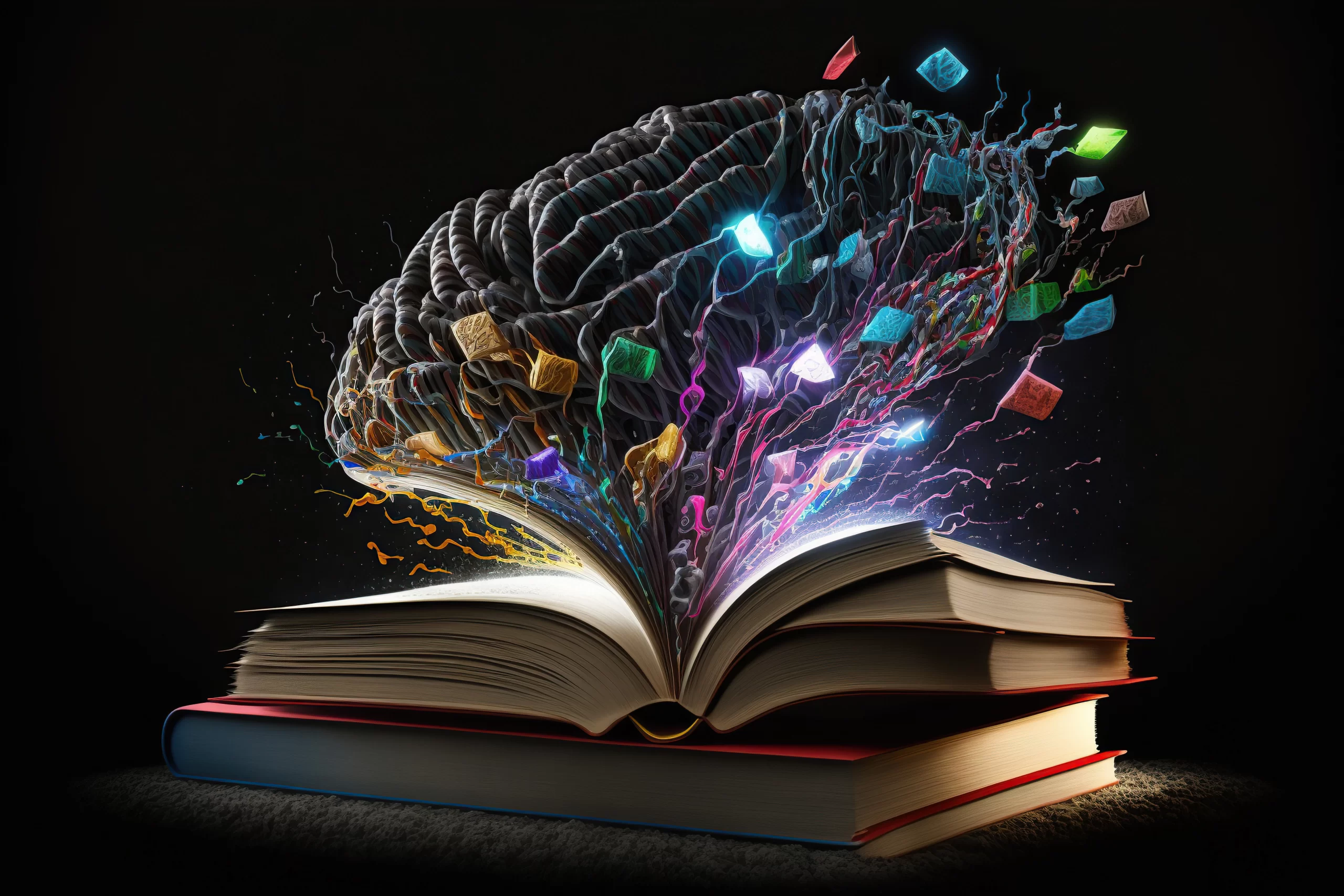
Behavior Design
We define activities, challenges, and experiences tailored specifically to your audience and goals. Gamification works when it connects to real human needs and motivations.

Experimental Storytelling
Our creative team weaves captivating narratives, characters, and worldbuilding to draw attendees into an engaging journey. We make gamification approachable through theme and story.

Meaningful Play
Play connects us more deeply to ourselves, others, and ideas. We incorporate reflective moments and impactful connections for a fulfilling gamified experience.
Play
Different
What sets our services apart:
• Decades of combined expertise
• Data-driven engagement strategies
• End-to-end capabilities
• Full in-house production
• Highly collaborative process
• Custom creations tailored to your brand
• Dedicated support and training
Do you want to explore how we can help you get to the next level?
FAQs
What is Gamification?
Gamification is the use of game design elements in non-game contexts to improve user engagement, motivation, and learning. It involves applying game mechanics like rules, feedback loops, challenges, and progression systems to drive intrinsic motivation and promote mastery of skills and content.
Effective gamification focuses on satisfying basic human needs for autonomy, competence, and relatedness. It aims to tap into the motivational power of playing games by designing systems where users make meaningful choices, receive clear feedback on performance, and have continual opportunities to improve through practice.
Well-implemented gamification moves away from simply layering external rewards like points and leaderboards onto activities. Instead, it centers on crafting the user experience to make activities feel more game-like. This means enabling goal-setting, introducing uncertainty, creating safe opportunities for failure, and using progress indicators that relate closely to the activity rather than feel separate or arbitrary.
The ultimate objective is to leverage peoples’ natural drive to learn and improve to better engage them with productive behaviors and educational content. Done right, gamification makes activities feel more rewarding for their own sake rather than simply a means to an extrinsic end.
Gamification involves the thoughtful application of game elements to drive intrinsic motivation and promote mastery and learning in non-game contexts.
How Gamification increases user engagement?
- Satisfying intrinsic needs for autonomy, mastery, and relatedness. Enabling users to make meaningful choices, set their own goals, and have a sense of control and self-direction taps into intrinsic motivation.
- Providing clear goals and challenges. Goals give users something to work towards and create a sense of purpose. Challenges of the right difficulty provide opportunities to experience mastery.
- Feedback loops. Effective performance feedback provides users information to improve and encourages retry and practice. This facilitates progression and learning.
- Engagement cycles with key decision points. Creating repeatable core cycles with consequential choices keeps users interested and invested.
- Progress indicators. Progress bars, XP systems, quest tracks etc. give users a sense of advancement and continuity which promotes ongoing participation.
- Onboarding and habit formation. Gamification principles like feedback and repeatable cycles can be used to successfully onboard users and build lasting usage habits.
- Managing uncertainty. Balancing certainty and uncertainty maintains engagement – total predictability is boring while too much uncertainty is frustrating.
- Communal elements. Social motivations can be leveraged by enabling social comparisons, collaborations, competitions etc. between users.
- Avoiding externalized rewards. Points and badges as ends in themselves can demotivate. Effective gamification curtails external rewards in favor of intrinsic motivations.
- Theme and storytelling. Narrative themes and metaphorical associations connect to users on a deeper level compared to generic systems.
Gamification provides a toolkit of techniques to engage core human motivations and needs in a way that promotes sustained, self-directed participation.
When to use Gamification?
- When intrinsic motivation needs a boost. If current user/learner engagement is low, gamification can reinvigorate by tapping into internal motivational drivers.
- To increase mastery and learning. Gamification is well-suited for skill development and educational contexts thanks to its feedback cycles and emphasis on progression.
- To shape behaviors and habits. The repeatable cycles and feedback loops of gamification are effective for habit formation and promoting positive behaviors.
- For onboarding users. Gamification elements help guide and incentivize users through onboarding processes to successfully adopt behaviors.
- To enhance engagement with repetitive or boring activities. Gamification makes repetitive tasks more rewarding and introduces variability and feedback.
- When theme and narrative can enhance experience. Gamification can elevate dull activities by situating them in compelling fictional or metaphorical contexts.
- To supplement (not replace) existing motivations. Gamification should complement current incentives, not be the sole motivator.
- For data-driven processes. Gamification systems require tracking user behaviors, metrics, and outcomes to function effectively.
- For early-stage products or features. Gamification can boost traction of new products still finding product-market fit with incentives for participation.
Gamification is applicable when there is a clear objective around behavior, engagement, or learning that intrinsic motivation and mastery-based incentives can organize towards. It should supplement existing motivations and leverage available data.
Why Gamification works?
- Satisfies human psychological needs – Gamification taps into innate human needs for competence, autonomy, and relatedness when designed well. This leverage of intrinsic motivation is a key reason for its effectiveness.
- Provides clear goals and feedback – Goals provide purpose and direction while real-time feedback enables adjusting behaviors to improve outcomes. This clarity is engaging.
- Fosters mastery mindset – The focus on progression and improvement rather than external rewards promotes adopting a mastery mindset which is enduring.
- Makes repetition enjoyable – Gamification introduces variability, decision points, and feedback to repetitive tasks to make them more rewarding over time.
- Aligns to learning science – Scaffolded challenges, repeated cycles, and feedback align with proven techniques to enhance learning as per cognitive and behavioral science.
- Leverages completion motivation – Game elements tap into the natural drive to progress, complete started tasks, and finish story arcs or missions.
- Offers customization – Allowing player choices, alternative progression paths, and customization enables catering experiences to different motivations.
- Provides safe practice – Games are motivating in part because failure is safe and temporary. Gamification adopts this principle with low-stakes failure.
- Fosters communities – Communal game elements facilitate social connections and leverage motivations like competition, collaboration, and recognition.
Thoughtfully designed gamification works by fulfilling basic human needs, making progress compelling, facilitating mastery, and leveraging proven engagement strategies.
Where is Gamification used? / Gamification examples
Gamification has been effectively used in a variety of contexts:
- Education – To increase student motivation, engagement, and enjoyment in classes. Used extensively in apps like Classcraft, Duolingo, Khan Academy, and Quizizz.
- Health and Fitness – To encourage fitter lifestyles and healthy habits. Commonly used in activity trackers like Fitbit, gym programs like Nike+ Run Club, and diet apps like MyFitnessPal.
- Sustainability – Used to promote eco-friendly behaviors and sustainability initiatives. Seen in recycling programs like Recyclebank, energy conservation campaigns, etc.
- Crowdsourcing – To increase participation in crowdsourced tasks. Used extensively in citizen science projects like Foldit, survey participation drives like Google Rewards, etc.
- Marketing – For customer loyalty and engagement programs. Gamification drives product recommendations, reviews, brand engagement in programs like Starbucks Rewards.
- Training – In corporate or workplace training for things like compliance, safety, skills development. Tools like Salesforce Trailhead and Codecademy Goals use gamification.
- Onboarding – To guide and incentivize users through onboarding new software, apps, or services. Apps like Duolingo, Slack, and Dropbox use it to speed up ramp-up.
- Communities – To strengthen communities, facilitate connections, and encourage participation. Used in forums, social networks like Reddit with karma and awards.
- Crowdfunding – To turn donors/backers into active evangelists and increase referrals. Improves conversion rates on platforms like Kickstarter.
The common thread is using gamification to drive participation, engagement, learning, and motivation in non-gaming contexts. Its principles are versatile and broadly applicable.
How can Gamification be used in marketing?
- Event marketing – Badges, leaderboards, and challenges tied to live or virtual events drive participation, social sharing, and engagement.
- Loyalty and rewards programs – Points, levels, challenges can drive ongoing engagement with brands, products, and services. e.g. Starbucks Rewards.
- Content sharing and UGC – Gamified missions and perks for social sharing of branded content or user-generated content.
- Referrals and advocacy – Levels, leaderboards to motivate referrals. Prizes or status for top advocates and evangelists.
- Reviews and ratings – Points, badges, and rewards for providing product reviews and ratings help generate useful customer feedback.
- Surveys and market research – Quick polls, quizzes, mini-games to make surveys more engaging. Lotteries and prizes work well.
- Interactive ads – Creating game-like interactions and challenges in ads before message delivery improves engagement.
- Onboarding – Structured missions guiding exploration of key features helps successfully onboard users.
- App retention – Feedback, reminders, new content unlocks re-engage users and creates stickiness.
- Behavior change – Habit-forming loops motivate desired user behaviors like more eco-friendly purchases.
- Brand engagement – Competitions, virtual rewards, and status for long-term brand interaction and ambassadorship.
The key is structuring motivational loops, social engagement, variable rewards, and recognitions that drive ongoing, mutually beneficial behaviors between users and brands.

